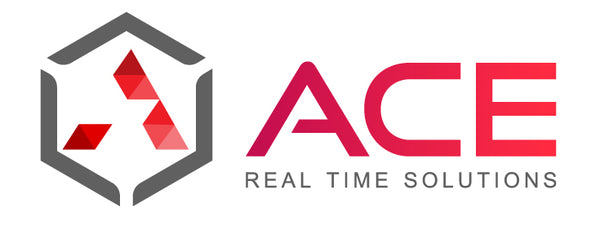Optimizing IT Rack Solutions for Energy Efficiency and Reliability
Share
In today's volatile energy landscape, the backbone of operational stability lies in your IT infrastructure. Energy companies face unique challenges: harsh environmental conditions, zero-tolerance for downtime, and increasing computational demands—all while navigating sustainability pressures and rising energy costs. It isn't lost that energy providers often struggle with optimizing their own power consumption and infrastructure reliability.
This article delivers practical strategies for energy sector professionals looking to optimize their IT rack solutions. You'll discover how purpose-built rack systems can significantly reduce operational vulnerabilities, enhance energy efficiency, and support mission-critical operations in demanding environments. By implementing these actionable insights, you'll be positioned to transform your IT infrastructure from a potential point of failure into a strategic asset driving operational excellence.
Power Management Strategies for Critical Energy Applications
Energy facilities demand uncompromising power reliability, yet often face challenges in maintaining consistent, clean power for their own mission-critical systems. Implementing these power management solutions can dramatically improve reliability while reducing energy waste:
- Deploy intelligent PDUs with remote monitoring: Implement rack-level power distribution units that provide real-time visibility into power consumption patterns. These systems allow for per-outlet monitoring and control, enabling you to identify potential circuit overloads before they cause failures and optimize load balancing across your infrastructure. A regional utility company recently reduced troubleshooting time after implementing networked PDUs with alerting capabilities.
- Implement redundant power paths with automatic transfer: Design your rack infrastructure with redundant power supplies and distribution paths to eliminate single points of failure. For critical energy monitoring systems, implement N+1 or 2N redundancy configurations with automatic transfer switches that ensure seamless operation even during maintenance or component failure.
- Consider lithium-ion UPS solutions: Modern lithium-ion UPS systems offer significantly longer service life, reduced maintenance requirements, and superior performance in high-temperature environments typical of energy facilities. While the initial investment is higher than traditional lead-acid systems, the total cost of ownership over a 10-year period is typically 30-40% lower.
Thermal Management for Harsh Energy Environments
Energy facilities often operate in challenging thermal conditions that can dramatically impact equipment reliability and lifespan. Implementing these targeted cooling strategies can maintain optimal operating temperatures while minimizing energy waste:
- Implement contained cooling architectures: Deploy hot aisle/cold aisle containment systems that physically separate hot exhaust air from cool intake air. This fundamental practice prevents mixing and can reduce cooling energy requirements by 20-30% while eliminating hotspots that threaten equipment reliability.
- Utilize close-coupled cooling solutions: For energy analytics servers or control systems that generate substantial heat, implement in-row or rack-based cooling that places cooling capacity precisely where heat loads exist. This approach is particularly valuable in remote energy facilities where traditional raised-floor cooling may not be practical.
- Deploy environmental monitoring networks: Implement a comprehensive sensor network that monitors temperature, humidity, and airflow at multiple points throughout your rack environment. These systems provide early warning of developing issues and enable data-driven optimization of cooling systems, preventing thermal-related failures before they impact operations.
Physical Security for Critical Energy Infrastructure
Energy infrastructure represents high-value targets requiring stringent physical protection. Your IT rack security strategy must address both regulatory compliance and practical risk mitigation:
- Implement multi-factor access control: Secure IT racks with electronic locks that require dual authentication (card+PIN or biometric verification) and maintain detailed audit logs of all access events. For NERC CIP compliance, ensure these systems integrate with your enterprise security management platform for centralized monitoring and reporting.
- Deploy rack-level monitoring solutions: Implement systems that detect and alert on unauthorized rack access attempts, door position changes, or vibration that might indicate tampering. These solutions provide crucial early warning of potential security breaches that could threaten critical energy operations.
- Consider modular security zones: For facilities housing both critical and non-critical systems, implement rack enclosures with varying security levels appropriate to the sensitivity of contained systems. This approach balances security requirements with operational accessibility while maintaining compliance with relevant standards.
Future-Proofing Energy Sector IT Infrastructure
The digital transformation of energy operations demands infrastructure that can adapt to evolving requirements. These strategies ensure your rack systems will support tomorrow's needs without requiring wholesale replacement:
- Plan for increasing power density: Design rack power and cooling systems to accommodate future growth in computing capacity. Consider modular UPS systems and cooling solutions that can scale incrementally as computational demands increase for energy analytics, grid management, and operational systems.
- Integrate edge computing capabilities: As energy operations become more distributed, deploy standardized rack configurations that support edge computing at remote generation or distribution sites. These solutions should include integrated power protection, cooling, and security appropriate for unstaffed or minimally-staffed locations.
- Prepare for hybrid operational models: Design rack infrastructure that bridges on-premises systems with cloud resources, enabling flexible deployment of applications based on performance, security, and reliability requirements. This hybrid approach provides maximum adaptability for evolving energy operations.
Conclusion: Transforming IT Infrastructure into a Strategic Energy Asset
As digital transformation reshapes the energy sector, optimized IT rack solutions become increasingly critical to maintaining reliable operations. By implementing strategic approaches to power management, thermal optimization, physical security, and future-oriented design, energy companies can build infrastructure environments that support mission-critical applications while minimizing operational costs and environmental impact.
The most successful energy organizations recognize that properly designed IT rack infrastructure isn't merely a necessary expense but a strategic investment that enables operational excellence, enhances resilience against disruptions, and supports sustainable growth. In an industry where reliability is non-negotiable, your rack infrastructure provides the foundation upon which all digital operations depend.
Ready to optimize your energy company's IT rack infrastructure? Visit acerts.com to explore solutions specifically designed for the unique challenges of the energy sector. Our team of experts can help you develop a customized approach that addresses your specific requirements while maximizing efficiency, security, and reliability.
